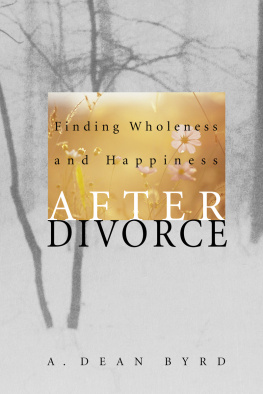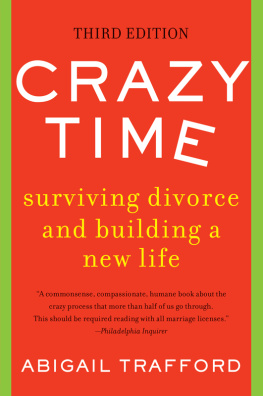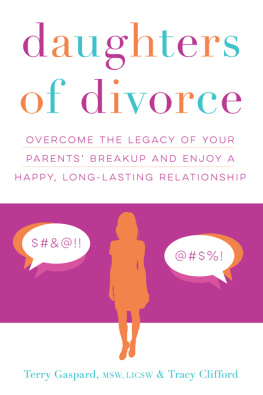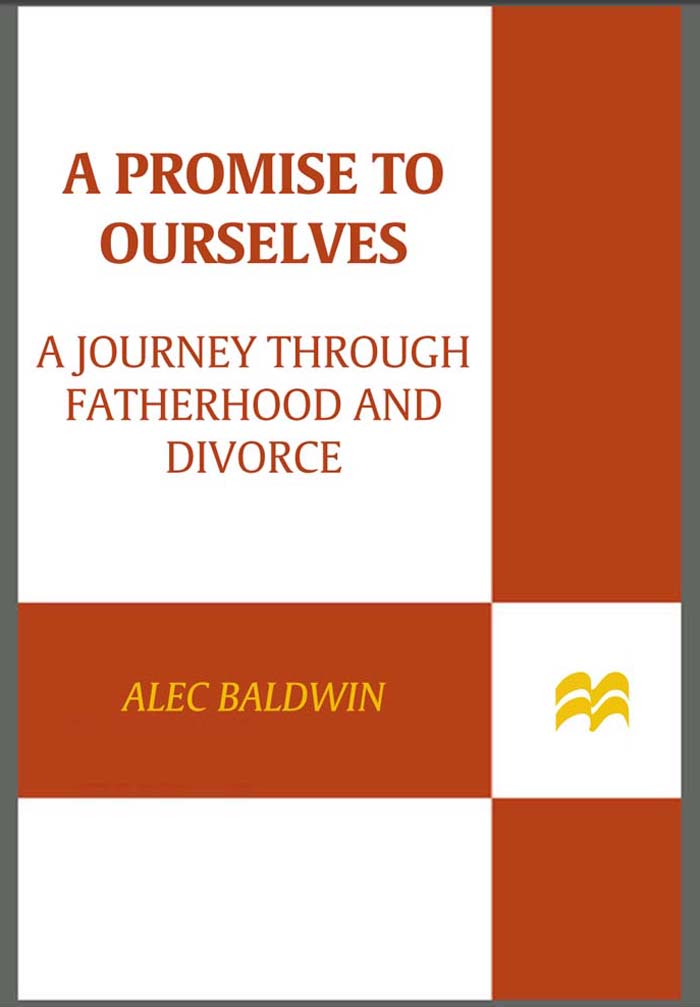A Promise to Ourselves
Alec Baldwin
with Mark Tabb
A Promise to Ourselves
A Journey Through Fatherhood and Divorce
ST. MARTINS PRESS  NEW YORK
NEW YORK
This book is sold with the understanding that neither the publisher nor the author is engaged in rendering legal or other professional services. If legal advice or other expert assistance is required, the services of a competent professional should be sought.
A PROMISE TO OURSELVES. Copyright 2008 by Alec Baldwin. All rights reserved. Printed in the United States of America. For information, address St. Martins Press, 175 Fifth Avenue, New York, N.Y. 10010.
www.stmartins.com
Design by Elina D. Nudelman
Library of Congress Cataloging-in-Publication Data
Baldwin, Alec, 1958
A promise to ourselves: a journey through fatherhood and divorce / Alec Baldwin.1st ed.
p. cm.
ISBN-13: 978-0-312-36336-9
ISBN-10: 0-312-36336-2
1. Baldwin, Alec, 1958Divorce. 2. ActorsUnited StatesBiography. 3. Custody of childrenUnited StatesCase studies. 4. Divorced fathersLegal status, laws, etc.United States. I. Title.
PN2287.B157A3 2008
792.02'8092dc22
First Edition: September 2008
10 9 8 7 6 5 4 3 2 1
To Ireland, for showing
To Nicole, for caring
To Beth, for listening
And to my mother, Carol Baldwin, for ringing
Contents
The Lamb
Little Lamb, who made thee?
Does thou know who made thee?
Gave thee life & bid thee feed
By the stream & oer the mead;
Gave thee clothing of delight,
Softest clothing woolly bright;
Gave thee such a tender voice,
Making all the vales rejoice?
Little Lamb who made thee?
Does thou know who made thee?
Little Lamb, Ill tell thee,
Little Lamb, Ill tell thee:
He is called by thy name,
For he calls himself a Lamb.
He is meek, & he is mild;
He became a little child.
I a child, & thou a lamb,
We are called by His name,
Little Lamb, God bless thee!
Little Lamb, God bless thee!
William Blake
A common way in which a parent will contribute to the alienation is to view as harassment the attempts on the part of the hated parent to make contact with the children. The alienated parent expresses interest by telephone calls, attempts at visitation, the sending of presents, etc. These are termed harassment and the children themselves come to view such overtures similarly. In frustration the parent increases efforts in these areas, thereby increasing the likelihood that the attempts will be viewed as nuisances.
Richard A. Gardner, M.D.
Recent Trends in Divorce and Custody Litigation,
Academy Forum, vol. 29, no. 2,
1985, pp. 37
A Promise to Ourselves
Introduction
I never wanted to write this book. Although my experiences with judges, lawyers, and court-ordered therapists during my own high-conflict divorce proceedings left me outraged over the injustices I believe are endemic to the family law system in our society, I had no desire to revisit them. The pain I suffered, the fear of and anger I felt toward nearly all of the principals involved, and the inescapable sense of helplessness and isolation exhausted me. However, to live inside the divorce matrix, to be engaged in that battle, ultimately means to be poised to tell your story, to make your point, to argue your side at a moments notice. It is a fire that is constantly burning.
These feelings moved me to share my own experiences with nearly any kindred spirit who broached the subject. In restaurants, ticket lines, airplanes, mens locker rooms, wherever I might be, when that particular conversation started, the facts of my own case would spill out in a torrent. Other times I would sit and listen for hours, grateful for the opportunity to allow someone else to unburden themselves. I could never tell my story urgently enough, and I never tired of the subject of divorces iniquities. I believed that a book on the subject would write itself.
Eventually, that would change. The passion I had for this issue dried up. The ideas and stories, once so fresh in my mind that I thought they would pour out of me and onto the page like a Pollock painting, began to fade. For three years I had told my story, each recitation as fresh as the first. But any normal human being has a limited capacity for ongoing conflict, and I believed I had reached mine. I have heard people use terms like spent and hollowed out to describe the ultimate result of protracted divorce litigation. Sadly, I have learned that little of this is hyperbole. Divorce litigation becomes like the island of Dr. Moreau in H. G. Wellss novel. The abused and horrified litigants want to row their boat away from that island at any cost. I was no different. I wanted nothing more than to put this entire experience behind me and get on with my life. I had grown weary of writing this book, until I would meet another man who had suffered the same way I had. Suddenly, the old passion to address these issues would return.
Divorce litigation is a unique phenomenon in our culture. When someone is sick, our society usually offers some means of care. Often that care extends to their families as well. The sick individual reaches out to professionals who arrive with their skills and training at the ready, prepared to solve the problem. When illness afflicts a marriage, however, the professionals who arrive on the scene often are there to prolong the bleeding, not to stop it. To be pulled into the American family law system in most states is like being tied to the back of a pickup truck and dragged down a gravel road late at night. No one can hear your cries and complaints, and it is not over until they say it is over.
Early in my own divorce proceedings I came upon men who told me that the corrosiveness and complexity of their divorces had forced them to give up. They wrote off not only their first marriages, but their children as well. Many went on to remarry. The chance to make things right meant starting another family. I could never, ever comprehend how a man could abandon his child in this way. However, as my own proceedings went on, and the recriminations became more severe, I began to appreciate these men, and some women as well, better than I imagined possible. I have sat with men whose hearts are filled with love for their children. Before their divorce there had never been any doubt of that love or their abilities as parents. Then divorce lawyers entered the picture to do what many of them do best: destroy an innocent parents reputation and their bond with their children. Therefore, lawyers, along with ineffectual judges who do little to curb such destructive forces in American family law, are a principal focus of this book.
Family law in most states has become its own preserve, one in which litigants come and go while the principal players remain the same. Those players, not the families whose fates are determined by this system, are the ones who profit from protecting the status quo. We have, I believe, a system designed to line the pockets of these principals. Anything that results in effective conflict resolution, protection of both parents rights, and, most important, a healthy environment for the children of divorce is a happy accident. The problem lies not only with antagonistic lawyers who perpetuate conflict but also with the judges who sit idly by and do nothing to rein them in.
However, this book is not a blanket indictment of all attorneys and the legal profession. I will cite by name some of the truly constructive and decent men and women I have encountered during my own proceedings. (Unfortunately, under the current system, decency and humanity often work against family law attorneys.) Nor do I mean to imply that a legal divorce is always an unsafe option when a relationship has degenerated beyond repair. There are times when dissolving a marriage is the best decision a couple can make. American taxpayers, however, continue to fund a system that turns a sensitive and private decision into a destructive process that leaves few unscathed. If getting out of your marriage is good for both you and your estranged spouse, it ought to be easier to achieve. The truth is that we maintain a system in which destroying ones ex-spouse, not effectively resolving conflict, is the order of the day.







 NEW YORK
NEW YORK